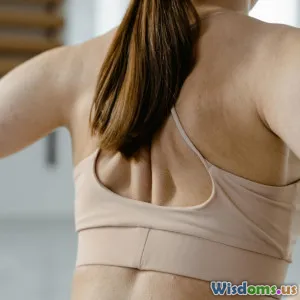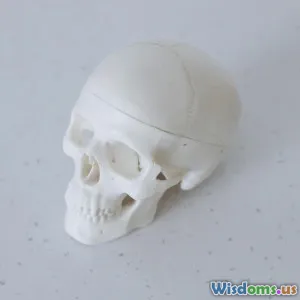
Real Stories How Pilates Helped Chronic Back Pain Sufferers
8 min read Discover how Pilates transformed the lives of chronic back pain sufferers in inspiring real-world stories. (0 Reviews)
Real Stories How Pilates Helped Chronic Back Pain Sufferers
Introduction
Chronic back pain plagues millions worldwide, often disrupting daily activities and diminishing quality of life. For many, conventional approaches like medication and invasive procedures seem to offer limited relief. However, a growing number of sufferers are turning to Pilates, a mindful exercise method emphasizing core strength, posture, and flexibility, as a durable solution. But does Pilates truly work for chronic back pain?
In this article, we delve into inspiring real-world stories of individuals who found significant relief and improved quality of life by incorporating Pilates into their rehabilitation. Through their journeys, data-backed insights, and understanding the underlying principles, readers will discover how Pilates can be a game-changer in chronic back pain management.
Understanding Pilates’ Role in Chronic Back Pain
The Challenge of Chronic Back Pain
Chronic back pain, defined as pain persisting for more than 12 weeks, is often multifactorial involving musculoskeletal imbalances, poor posture, weak core muscles, and sometimes nerve involvement. Traditional treatments including analgesics, physical therapy modalities, or surgery do not always provide lasting relief. This gap has driven interest in integrative exercise regimens like Pilates.
Pilates: More Than Just Exercise
Pilates, founded by Joseph Pilates in the early 20th century, focuses on strengthening the deep core muscles that support the spine, improving posture, and enhancing body awareness. The method utilizes controlled movements, emphasizing breathing, alignment, and muscular balance—components crucial to relieving and preventing back pain.
Scientific studies reinforce Pilates’ effectiveness. A 2015 study published in the Journal of Bodywork and Movement Therapies found that chronic back pain patients practicing Pilates exhibited significant pain reduction and functional improvement compared to control groups.
Real-Life Stories of Transformation
Story 1: Emily’s Journey from Desk Job Pain to Active Freedom
Emily, a 38-year-old graphic designer, suffered from chronic lower back pain due to prolonged sitting and poor posture. After years of discomfort and reliance on painkillers, she tried Pilates on a friend’s recommendation.
Experience: Starting with beginner classes focusing on core stabilization, Emily noticed reduced stiffness in six weeks. Over four months, her pain episodes decreased by over 60%, allowing her to resume yoga and hiking.
“Pilates taught me to listen to my body and engage muscles I never knew I had. It’s more than exercise—it’s therapy.”
Story 2: John’s Recovery Post-Disc Herniation Surgery
John, male, 54, underwent surgery for a lumbar disc herniation and was wary of activity due to fear of re-injury. A physical therapist introduced him to a modified Pilates program tailored for spinal rehabilitation.
Outcome: Over a year, John regained strength, improved flexibility, and completely stopped relying on pain medications. His postural habits improved significantly, reducing strain on his spine.
A study from Spine journal supports that post-operative Pilates can speed functional recovery and reduce chronic symptoms after spine surgery.
Story 3: Maria’s Success Battling Fibromyalgia-Linked Back Pain
Maria, diagnosed with fibromyalgia, struggled with widespread musculoskeletal pain, including persistent back pain. She started Pilates to address her muscle weakness and balance issues.
Results: Maria reports decreased flare-ups and enhanced mobility, attributing these changes to the controlled yet gentle Pilates routine customized for her condition.
A study in Disability and Rehabilitation highlights Pilates’ benefits in improving pain and psychological well-being for fibromyalgia patients.
Why Pilates Works: Key Mechanisms
Core Muscle Strengthening
Weakness in abdominal and spinal muscles destabilizes the spine, contributing to chronic pain. Pilates exercises target the transverse abdominis, multifidus, and pelvic floor muscles—critical for lumbar support.
Postural Alignment and Awareness
Poor alignment strains back muscles and discs. Pilates trains individuals to recognize and correct posture both on and off the mat, reducing undue spinal loading.
Low Impact, Adaptable Movements
Unlike high-impact workouts, Pilates offers gentle progression suitable for all fitness levels, including injury recovery and chronic pain sufferers.
Breathing and Relaxation
Pilates incorporates diaphragmatic breathing, which decreases muscle tension and stress—factors known to exacerbate chronic pain.
How to Get Started
- Consult Your Healthcare Provider: Especially important if you have underlying conditions or recent surgeries.
- Find a Certified Pilates Instructor: Look for professionals experienced in therapeutic or clinical Pilates.
- Begin Slowly: Start with beginner or rehabilitative classes emphasizing form, alignment, and core activation.
- Consistency is Key: Regular practice (2-3 times a week) maximizes benefits.
- Listen to Your Body: Avoid pushing through pain; modifications are available.
Conclusion
The remarkable real-life stories of Emily, John, and Maria reveal that Pilates is more than just a trendy workout; it is a potent tool in the arsenal against chronic back pain. By enhancing core strength, posture, and body awareness, Pilates empowers sufferers to reclaim mobility, reduce pain, and improve their quality of life.
Backed by clinical studies and growing anecdotal evidence, Pilates presents itself as a safe, adaptable, and effective method to complement traditional treatments. Whether you're battling stubborn lower back pain or recovering from spinal injury, Pilates offers hope and a roadmap to tangible change.
If chronic back pain holds you back, consider embracing Pilates—your spine might thank you.
References:
-
Wells, C., Kolt, G. S., & Bialocerkowski, A. (2015). "Defining Pilates exercise: a systematic review." Journal of Bodywork and Movement Therapies, 19(2), 89-96.
-
Miyamoto, G. C., Costa, L. O. P., Binici, D., & Oses, J. P. (2013). Effectiveness of Pilates exercises for improvement of pain and disability in individuals with chronic low back pain. Spine, 38(24), 2082-2087.
-
Altan, L., Korkmaz, N. K., Dizdar, M., & Bingul, D. (2012). Effect of Pilates training on pain, functional status, and quality of life in fibromyalgia syndrome: a randomized controlled trial. Disability and Rehabilitation, 34(3), 224-230.
Rate the Post
User Reviews
Popular Posts




















